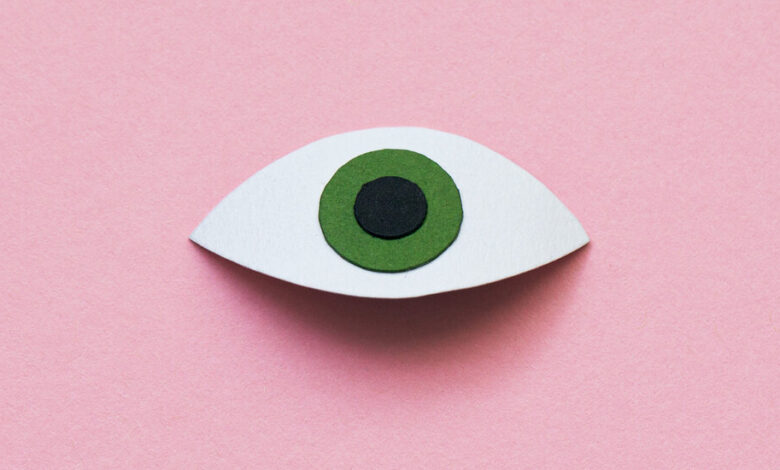Is It Possible to Reverse the Dark Circles Under My Eyes?

Perhaps this routine sounds familiar: You wake up, look in the mirror and scrutinize the dark, hollowed-out skin underneath your eyes. You look exhausted, despite having slept well. And maybe you look older than you are, too.
Dark circles are one of the most common skin complaints, said Dr. Daniel Friedmann, a dermatologist and clinical research director at Westlake Dermatology in Austin, Texas. And they’re one of the most frustrating to treat.
Eye creams and serums that claim to improve dark circles can be expensive. And most haven’t undergone “any real intensive lab or clinical testing,” Dr. Friedmann said, so they’re often ineffective.
Because dark circles can have various causes and can appear in different hues — like purple, blue, brown or black — there is not always a one-size-fits-all solution for getting rid of them, Dr. Friedmann said.
But some treatments can help.
Why do you get dark circles, anyway?
As you age, the skin around your eyes gets thinner and loses collagen, so the blood vessels underneath can pop through, creating a bluish discoloration under the eye, Dr. Friedmann said.
At the same time, the skin and muscles under your eyes can loosen, causing bags that cast a dark shadow, Dr. Friedman said.
Dark circles are also genetic — you’re more likely to get them if others in your family have them, Dr. Ivy Lee, a dermatologist in Pasadena, Calif., said. And skin tone plays a role; people with darker skin may be more prone to getting dark circles from a brownish pigmentation under their eyes, Dr. Friedmann said.
Allergies can temporarily make dark circles worse, as can dehydration, smoking, insufficient sleep or rubbing your eyes, Dr. Lee said.
Can eye creams help?
Despite claims on product packaging or advertisements, there’s no scientific evidence that over-the-counter products actually get rid of dark circles, said Dr. Ronald Moy, a dermatologist and plastic surgeon in Beverly Hills, Calif.. “I think none of them work,” he said. “I’ve never personally seen any improvement.”
However, he’s conducted research on a protein in some skin care products called epidermal growth factor, which boosts cell growth in the skin, and he said the ingredient had been shown to reduce under-eye bags when applied topically. Dr. Moy said the substance might also lighten dark circles “to a modest degree.”
Dr. Lee said that other eye cream and serum ingredients, like hyaluronic acid, antioxidants or caffeine, could minimize dark circles but that they’re only a “quick fix” and won’t get rid of them permanently.
For instance, she said, products with moisturizing ingredients like hyaluronic acid, ceramides or petroleum jelly, combined with brightening agents like vitamin C and niacinamide, hydrate and plump under-eye skin so the “underlying blood vessels are not as apparent.”
But any improvements you see will only be temporary. And for the most part, you’d get the same hydrating effects with any kind of moisturizer — it doesn’t necessarily have to be one specific to dark circles.
Over-the-counter products with retinol can help improve skin-cell turnover and thicken the skin, which might lighten dark circles temporarily, Dr. Friedmann said. Even better, Dr. Lee added, are prescription topical retinoids, which may work better than over-the-counter versions.
But dark-circle products can range from tens to hundreds of dollars. And spending more doesn’t yield better results. There’s typically no difference between drugstore and high-end products, other than “fancier packaging,” Dr. Lee said.
Dr. Moy added, “It’s hope in a bottle.”
What else works?
Some treatments can brighten dark circles, keep them from getting worse and sometimes get rid of them altogether, depending on what’s causing them, Dr. Lee said.
Lasers. Fractional laser resurfacing (also known as Fraxel) can remove any brownish discoloration by peeling off the pigmented layer of skin, Dr. Friedmann said. Other lasers, like the Nd:YAG (or neodymium-doped yttrium aluminum garnet) laser, can minimize purple or blue discoloration by targeting blood vessels, he said. And fractional carbon dioxide lasers can minimize the appearance of dark circles by thickening the skin under the eyes, Dr. Moy said.
Chemical peels. Regular chemical peels, using retinol or glycolic acid, can keep dark circles from getting worse, Dr. Lee said.
Microneedling. This procedure involves piercing the skin with tiny needles to make small wounds and spur the skin’s repair process, triggering collagen production that can tighten, plump and smooth the texture of the skin under the eye, Dr. Lee said.
Fillers. Hyaluronic acid fillers may be used (sometimes in combination with lasers) to boost under-eye skin volume, making dark circles less apparent, Dr. Friedmann said. Fillers can pose certain risks, however, such as temporary bruising or swelling; rarely, they have caused blockages in an artery that supplies blood to the retina, which can result in blindness.
Surgery. Doctors can remove extra fat and skin from under the eyes to help dark circles caused by under-eye bags, Dr. Moy said. But surgery is usually a last resort for patients whose dark circles haven’t improved with other treatments.
Sometimes, a combination of treatments is the best approach, Dr. Friedmann said. You may also need multiple and sometimes frequent procedures to see results.
And it’s not always possible to get rid of them completely, especially if your skin is showing signs of aging, Dr. Friedmann said.
He recommended seeking treatment as early as possible, such as in your 20s, instead of waiting until your 40s or later, when you have less collagen to work with.
Source link

